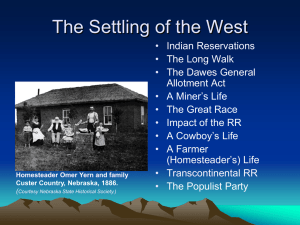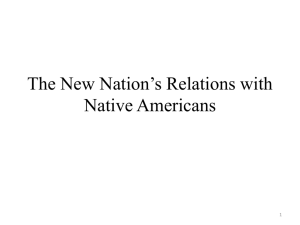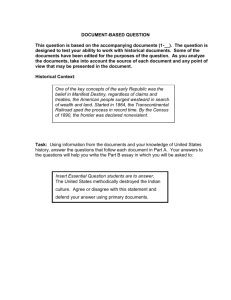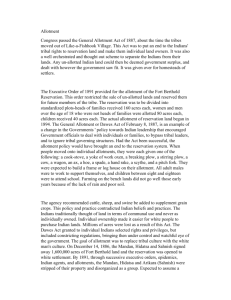WebQuest 12 Forced assimilation
advertisement
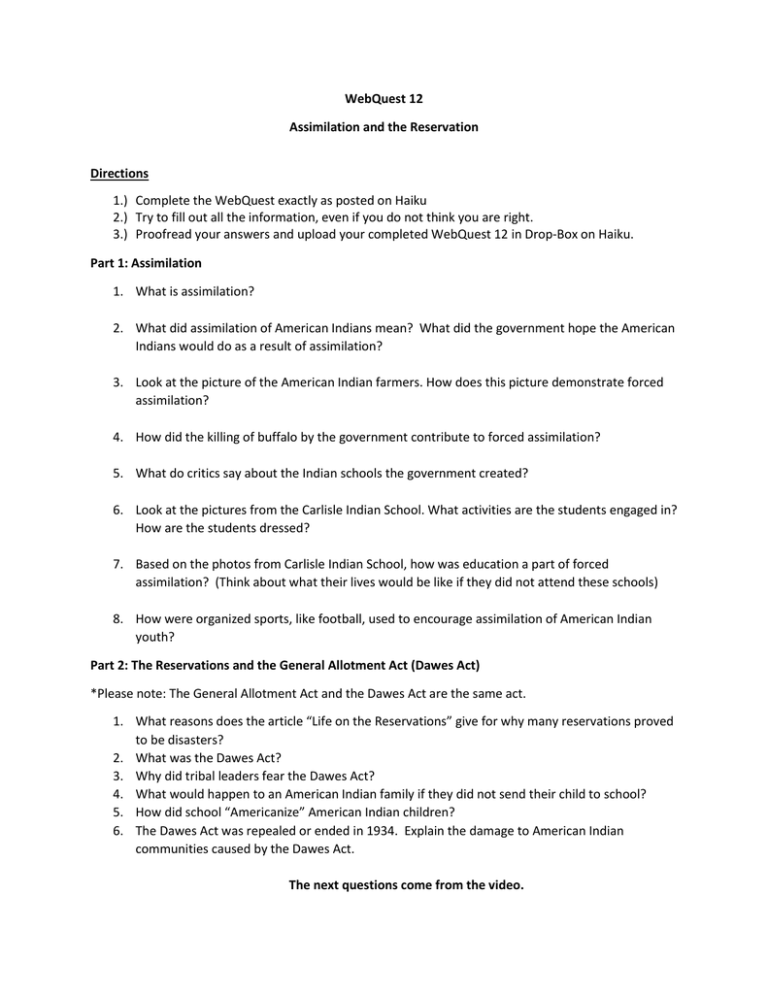
WebQuest 12 Assimilation and the Reservation Directions 1.) Complete the WebQuest exactly as posted on Haiku 2.) Try to fill out all the information, even if you do not think you are right. 3.) Proofread your answers and upload your completed WebQuest 12 in Drop-Box on Haiku. Part 1: Assimilation 1. What is assimilation? 2. What did assimilation of American Indians mean? What did the government hope the American Indians would do as a result of assimilation? 3. Look at the picture of the American Indian farmers. How does this picture demonstrate forced assimilation? 4. How did the killing of buffalo by the government contribute to forced assimilation? 5. What do critics say about the Indian schools the government created? 6. Look at the pictures from the Carlisle Indian School. What activities are the students engaged in? How are the students dressed? 7. Based on the photos from Carlisle Indian School, how was education a part of forced assimilation? (Think about what their lives would be like if they did not attend these schools) 8. How were organized sports, like football, used to encourage assimilation of American Indian youth? Part 2: The Reservations and the General Allotment Act (Dawes Act) *Please note: The General Allotment Act and the Dawes Act are the same act. 1. What reasons does the article “Life on the Reservations” give for why many reservations proved to be disasters? 2. What was the Dawes Act? 3. Why did tribal leaders fear the Dawes Act? 4. What would happen to an American Indian family if they did not send their child to school? 5. How did school “Americanize” American Indian children? 6. The Dawes Act was repealed or ended in 1934. Explain the damage to American Indian communities caused by the Dawes Act. The next questions come from the video. 7. The video discusses the General Allotment Act (Dawes Act) and how American Indians first responded to it. Why did American Indians not understand the law? 8. What feature of the General Allotment Act angered American Indians the most and who did it really benefit? 9. What did the General Allotment Act do to American Indian land and what did the General Allotment Act violate? 10. Between the years of 1887-1934, how much land was lost in Indian Country as a result of allotment? 11. What would happen to surplus Indian land? 12. Describe what happened to reservations in South Dakota. 13. What new program did the US federal government start in the 1950s? 14. What did the relocation program promise American Indians? 15. What actually resulted from the relocation program? Did relocation offer American Indians a better life in the cities? Explain your answer. Part 3: Reservations Today 1. From the Native America Aid website, describe the following aspects of American Indians today Describe the living conditions of American Indians today. Describe the employment rates of American Indians today. Describe the housing crisis in Indian Country. Describe the health issues facing American Indians. 2. The video clip on the Pine Ridge Reservation presents a lot of information about major issues facing the Oglala Lakota Sioux living on the reservation. As you watch the video, note what is mentioned about the following issues. Take notes below: Alcoholism: Suicide: Diseases / Health Issues: Food: Housing: 3. After watching the video on the Navajo Reservation, “The Daily Routine of a Navajo Family,” what differences do you see between the Pine Ridge Indian Reservation and this Navajo family? Compare and contrast the two. Also, explain why you think these difference exist. 4. For the Navajo family, how do they continue to practice their traditional culture?
